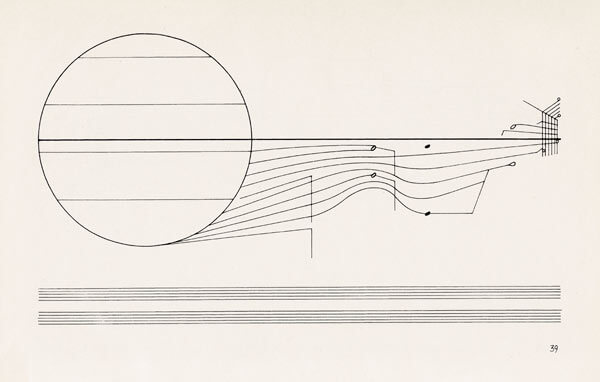Collaboration is at the heart of innovation in the artistic world.
This is not a new concept: think Serge Diaghilev, the impresario of the Ballets Russes who brought composers, painters, playwrights, choreographers and dancers, in works like Parade, a collaboration among composer Erik Satie, playwright Jean Cocteau, Pablo Picasso as the set designer and choreographer Leonide Massine.
At its best, collaboration unites the creative voices of multiple equal partners who share a common vision and mission to create something that is bigger than the sum of its parts. At its best, it is the ideal format for dealing with complex and ambiguous problems that are at the heart of the creative process. But collaboration is often misunderstood since is Collaboration is more than teamwork!
Unlike a team, where there is a leader to set the agenda and resolve disputes, collaboration involves equal partners, often with involve multiple and conflicting agendas. Collaboration involves taking risks and it can be time consuming as the collaborators share their ideas, run into disagreements, clash over the best approach and ideally, hash out their solutions. But the end result is worth the time if collaboration is handled properly.
How do you as a musician or artistic entrepreneur become a great collaborator?
Great collaboration starts with knowing your own creative voice and what you can contribute to the group. This involves knowing who you are at your core:
- What are you values and your values principles?
- What strengths do you bring in service of your mission?
- What are you passions?
- What is your personal vision and mission so that you know what you stand for and what you are committed to achieving.
This is what you bring to the collaborative group and what you can contribute to the greater mission of the project.
Once you are part of a collaborative group, what does it take for the collaboration to succeed?
Here are the 10 top elements that are the keys to successful collaboration.
1. A common vision and a common goal
Collaborators rally around a common vision and goal and work together by sharing knowledge and building a consensus. It is the joint effort towards the common vision and goal that matters. The individual members of the collaborative group sublimate personal ego for the greater good of the end product.
2. Commitment to work together
Collaboration involves a commitment on the part of the members of the group to work together. Because they are bound by their common mission, the members of the group feel emotionally engaged in the project and are willing to commit to working together towards the greater goal.
3. Mutual respect
The members of a collaborative group bring their individual strengths and talents to the project and thus have a high degree of respect for each other’s expertise and knowledge. This involves knowing how your strengths contribute to the success of the project and acknowledging the strengths and contributions of your fellow collaborators.
4. Strong relationships and trust
Great collaboration involves building strong relationships. Members of the group need to trust each other. To that end, it is important to encourage others, recognize their contribution, share the credit for good ideas, give respectful feedback and accept feedback graciously.
5. No leaders but a group effort among equals
In a collaborative group, there is no leader. Instead, each member of the group has ownership of a part of the project. Members step up as needed to lead in their area and then recede to allow another member to come forward. Visualize this by observing a ballet by Balanchine where dancers come forward when it is their turn to shine and then they step back to allow someone else to come to fore. While it might be a challenge to give up control, the benefit is that the group effort generates a better result.
6. Assign roles and responsibilities
Since each member of the collaborative group is a leader of his or her own segment, he or she is responsible for delivering on that segment. To that end, group members need to be clear on who is responsible for what. In that way, collaboration leverages the strengths and talents of the individual group members.
7. Be accountable
Collaboration works only if the group members are equally committed to the project. Therefore, members of the group need to be accountable to each other and deliver on their assigned tasks for the benefit of the end result.
8. Be flexible and comfortable with ambiguity
Creativity and innovation often involve ambiguity so the members of a collaborative group need to be flexible and adapt to changing circumstances. This involves being open-minded and willing to experiment. Indeed, collaboration is iterative and members learn by experience, as well as by sharing their knowledge and challenges, which leads to the next key skill.
9. Communicate effectively
Successful collaboration requires exquisite communication skills. This includes understanding how to leverage communication styles, listening objectively and intuitively in order to develop rapport and mutual understanding, fostering dialogue, and nipping potential conflicts in the bud. Members of the group feel comfortable asking for help when needed, they meet regularly to make sure that they are on the same page and they engage in healthy discussions to solve problems and make decisions. Artistic collaborators are busy people and it may be hard to meet face-to-face so be creative in your use of remote technologies and use Google documents or some other cloud-based modality to share information!
10. Manage conflict
Inevitably, there will be disagreements among members of a collaborative group. Collaborators make decisions as a group based on what is best for the project, even if they do not totally agree with each other. And when the disagreements begin to threaten the cohesiveness of the group and/or the progress of the project, collaborators need to learn how to diffuse conflict, prepare for a conflict meeting when things heat up, and run a successful conflict meeting in order to address important issues and preserve the relationships.
There is a lot more to being a successful collaborator than simply working together side-by-side. If you master these skills, you can save time, preserve relationships and build something new and valuable.






















